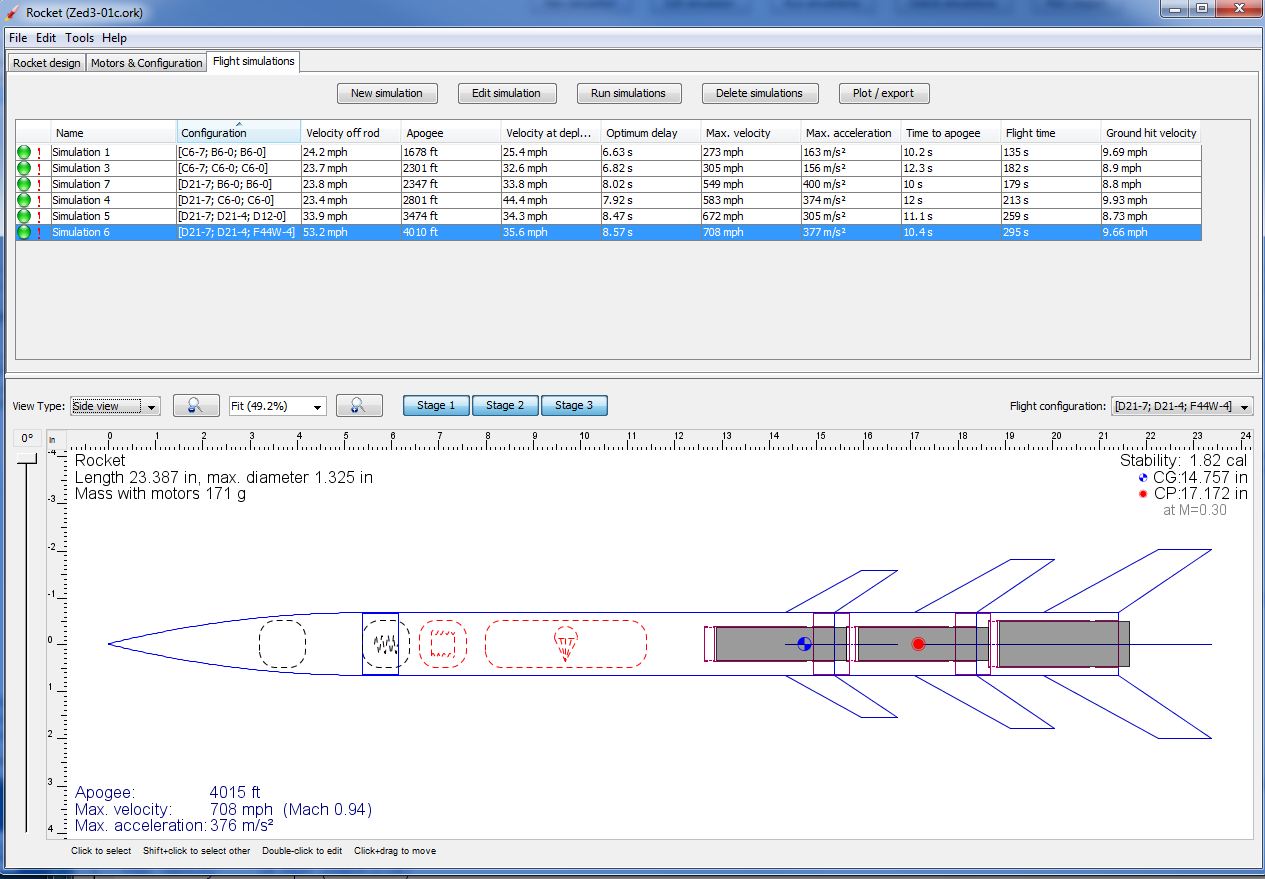Brainlord Mesomorph
Well-Known Member
- Joined
- Apr 2, 2018
- Messages
- 266
- Reaction score
- 26
The goal of my rocketry program has always been higher and faster.
My latest sport rocket design, the Icarus 3, according to OR, hits an apogee of 2200 ft, at mach 0.56 on a C6-7. I think that pretty much tops out what you can do w/ single stage LPR. Its predecessor Icarus 2, did 2000 ft at Mach .052, and on its first high altitude attempt, was never heard from again. (that is why I name these things Icarus).
Of course, the solution to losing rockets is GPS Telemetry and/or 2 stage recovery, fine. That stuff weighs 22+ grams. By the time I add all that to a single stage LPR, I get an Ap of 500ft, and at that Ap I don't need any of it.
Now if I'm going to need and be able to use an Eggtimer or whatever, I'm going to have to finally go to multi stage rockets. I know The Rocket Equation!..... (exists). I don't know the math, but I do get the concept that there's a best "mass ratio" (?) between the various stages and that roughly each stage ends up being 2 to 3 times the size of the previous stage (i.e. the Saturn V or Falcon Heavy).
In multistage LPR we don't do that, we just tack on another engine mount and fin assembly and call that a stage.But shouldn't we? Shouldn't top stages run on 13mm engines?
I have noticed Estes sells "booster kits" that are 24mm and that opens the MPR can of worms.
These D and E engines are much more expensive to begin with and by the time you factor in the HazMat fee they're ludicrous. And as I look at these MPR kits in the Estes catalog, they don't go any higher or faster than LPR kits. (MPR really does not interest me) Wouldn't clustering Cs do the same thing?
So I'm going start dabbling in multistage w/ a simple LPR 2 stager. but later I want to add a 3rd booster and that should be MPR or clustered LPR (or... what?)
My latest sport rocket design, the Icarus 3, according to OR, hits an apogee of 2200 ft, at mach 0.56 on a C6-7. I think that pretty much tops out what you can do w/ single stage LPR. Its predecessor Icarus 2, did 2000 ft at Mach .052, and on its first high altitude attempt, was never heard from again. (that is why I name these things Icarus).
Of course, the solution to losing rockets is GPS Telemetry and/or 2 stage recovery, fine. That stuff weighs 22+ grams. By the time I add all that to a single stage LPR, I get an Ap of 500ft, and at that Ap I don't need any of it.
Now if I'm going to need and be able to use an Eggtimer or whatever, I'm going to have to finally go to multi stage rockets. I know The Rocket Equation!..... (exists). I don't know the math, but I do get the concept that there's a best "mass ratio" (?) between the various stages and that roughly each stage ends up being 2 to 3 times the size of the previous stage (i.e. the Saturn V or Falcon Heavy).
In multistage LPR we don't do that, we just tack on another engine mount and fin assembly and call that a stage.But shouldn't we? Shouldn't top stages run on 13mm engines?
I have noticed Estes sells "booster kits" that are 24mm and that opens the MPR can of worms.
These D and E engines are much more expensive to begin with and by the time you factor in the HazMat fee they're ludicrous. And as I look at these MPR kits in the Estes catalog, they don't go any higher or faster than LPR kits. (MPR really does not interest me) Wouldn't clustering Cs do the same thing?
So I'm going start dabbling in multistage w/ a simple LPR 2 stager. but later I want to add a 3rd booster and that should be MPR or clustered LPR (or... what?)





